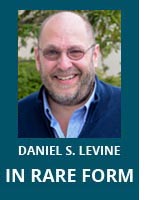
Some numbers make for good headlines but taken out of context they may offer little insight into the problems facing patients, payers, or our healthcare system.
The pharmaceutical benefits manager Prime Therapeutics recently crunched some data and found that the number of people using what it called “ultra-expensive medicines” rose by 60 percent and that in 2018, some 4,869 people accounted for more than $2 billion in healthcare plan drug costs.
The number of these so-called “drug super spenders”—health plan members with drug costs in excess of $250,000 a year—has grown at a relatively fast clip. In 2016, there were just 2,994 drug super spenders responsible for about $1.2 billion in drug costs.
Prime’s study analyzed more than 17 million commercially-insured members with a least one month of eligibility in the calendar years 2016, 2017, and 2018.
In some respects, the growth of drug super spenders reflects good news for the rare disease community as it is driven in part by the approval of much needed therapies for rare diseases. These therapies carry high price tags because of the small markets they address. It also reflects a broader trend in the growth of specialty drugs used to treat complex, chronic, or rare conditions, which now make up more than 50 percent of total drug spending, according to the market research firm IQVIA.
Prime notes that of 59 new drugs approved in 2018, 34 were for rare diseases including one-time gene therapies. However, this innovation comes at a price. Rare disease medicines often carry costs that range from $500,000 to more than $2 million.
As a pharmacy benefits manager, Prime is in the business of helping health plans save money on drug spending so it’s not surprising that health plans and employers who are self-insured are nervous about the growing number of these high-priced therapies for rare disease. Adding to their anxiety is the uncertain durability of new gene therapies and whether they will provide a lasting cure or a recurring expense.
Prime notes that there are 10 or more rare disease gene therapies expected to be approved annually starting in 2025 and that health plans are preparing for the impact of these high-cost therapies on total drug spend.
“With continued growth in treatments for rare diseases, including one-time treatments that may carry million-dollar price tags, it’s very likely that healthcare cost will become even more skewed, with a smaller and smaller fraction of insured members accounting for a larger and larger portion of the total health care cost,” said Jonathan Gavras, senior vice president, chief medical officer at Prime. “We must work to ensure drug and gene therapies are priced appropriately to the value they provide, obtained and billed via the cost-effective channel with the highest quality patient management, and value-based contracts are in place to recoup costs if the drug or gene therapy does not maintain effectiveness.”
The nature of healthcare spending is such that a small portion of people consume a disproportionate percentage of care. That’s not new. In the United States, the Kaiser Family Foundation found that in 2016, 5 percent of the population accounted for half of all health spending—about $50,000 annually. People in the top 1 percent have average spending of more than $109,750 annually.
The 50 percent of the population with the lowest healthcare spending accounted for just 3 percent of total healthcare spending with an average of $276. In any given year, healthy people don’t spend that much money on healthcare. People with serious medical conditions, however, do. Insurance is about spreading risk and being prepared for catastrophe.
Prime, as a pharmacy benefits manager, is in the business of worrying about a particular pain point—the cost of therapeutics. It thinks narrowly. That $2 billion spend by on super spenders represents a tiny faction of the $3.5 trillion in annual healthcare spending in the United States. What’s more, it doesn’t consider how a gene therapy may translate into overall cost-savings to the healthcare system if it eliminates the need to treat a patient over a lifetime of treatments and hospitalizations.
The patients that Prime labels as drug super spenders are not the problem, while Prime is correct that payers will need to brace for a small group of patients receiving more high-priced therapies. Discussions of how to determine value and ways of structuring value-based agreements will likely intensify. It will be important to find ways to ensure access while promoting innovation and sustainability.
It’s worth noting, though, that the issue of value has helped drive the industry to focus on specialty pharmaceuticals and rare disease drugs. Chasing me-too therapies and billion-dollar markets produced drugs that too often had limited value. It is the pursuit of drugs that provide meaningful benefits to patients and the growing precision of medicine that has brought us here.
That is something payers should celebrate.

Stay Connected
Sign up for updates straight to your inbox.
